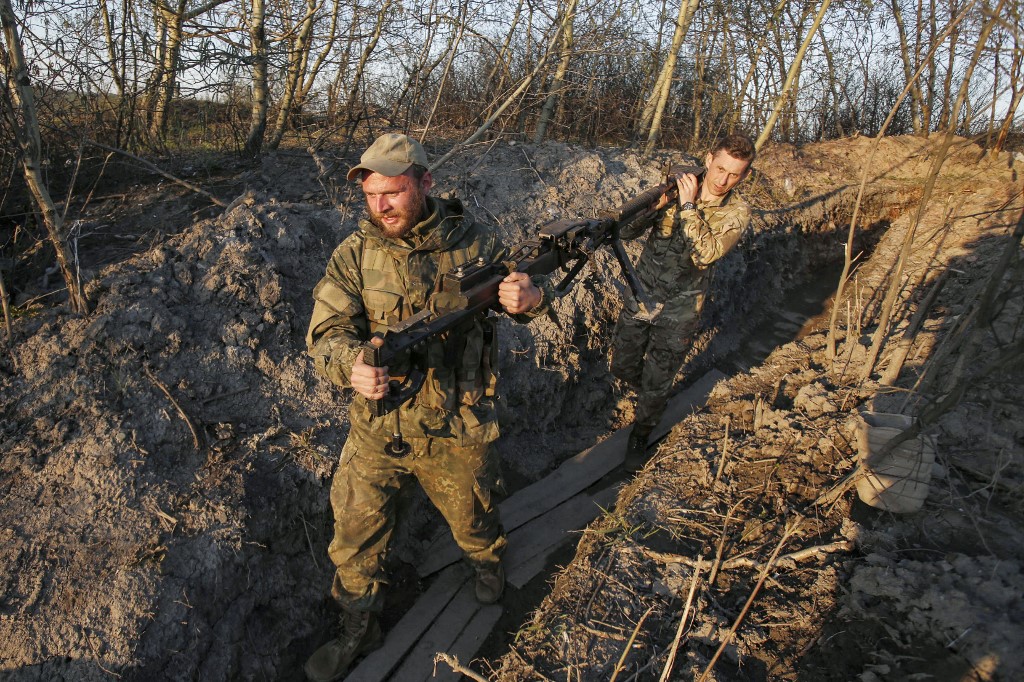Ukrainian forces and Russian-backed militants have launched a process of mutual disengagement near the front line town of Zolote in the Donbas war zone. The bilateral pull-back of troops and armaments comes after a long standoff amid numerous ceasefire violations that repeatedly delayed the disengagement.
Ukraine’s foreign minister, Valentyn Prystaiko, announced the start of disengagement on Oct. 29 during a major investment forum in the Donetsk Oblast city of Mariupol. It was later confirmed by the Ukrainian Armed Forces.
“Up until the Normandy Four meeting (of Russian, Ukrainian, French, and German leaders), there will be a disengagement in the areas we have already agreed upon,” the minister said.
“Right now, the disengagement is happening in Zolote. We start off today… This is a mutual pullback of troops directly engaged along the line of contact.”
Both the Ukrainian military and the Russian-backed militants will pull their forces and weaponry one kilometer back from the front line.
As in late July, when both sides withdrew near the front line crossing at Stanytsya Luhanska, the Special Monitoring Mission of the Organization for Security and Cooperation in Europe (OSCE) must confirm compliance with the process, Prystaiko added.
Previously, the Ukrainian military repeatedly identified fresh ceasefire violations by Russian-backed militants near Zolote, which prevented disengagement. The essential prerequisite for the mutual withdrawal was seven days of total silence in the area.
On the morning of Oct. 29, yet another ceasefire violation was reported at Zolote. According to Ukraine’s military, despite confirming their readiness to withdraw, Russian-backed fighters had opened fire five times the previous day at a distance of five kilometers away from one of the disengagement points.

Ukrainian soldier carry a machine gun in their trench on the front line with Russia-backed separatists near the town of Zolote, Luhansk region on April 20, 2019. (AFP)
“Despite the Ukrainian Armed Forces being ready to conduct the disengagement of manpower and weapons… the occupants demonstrate a lack of will to follow the Minsk agreements and obligations they assumed,” the Ukrainian military said.
Just three hours later, Ukraine’s Joint Forces command confirmed that the process of mutual withdrawal had been launched at midday local time at disengagement area No. 2 near Zolote — the very same location reported to have been attacked by Russian-militants just a day earlier.
Nonetheless, the military said the attack occurred outside the special disengagement area of Zolote.
“(The start of mutual withdrawal) has become possible due to a week-long, sustainable ceasefire,” the military said. “The beginning of disengagement has been confirmed by (the Special Monitoring Mission of the) OSCE.”
The withdrawal will not be harmful to Ukraine’s defenses and is aimed at saving the lives of military servicepeople and local civilians in the area, the military said.
If the mutual withdrawal is successful near Zolote, the process of disengagement can be continued at yet another agreed-upon spot: near the village of Petrivske in Donetsk Oblast, east of the city of Volnovakha, Foreign Minister Prystaiko said in Mariupol.
Joint Forces commanding general Volodymyr Kravchenko is expected to announce more details on the process during a briefing in Kramatorsk, a city in Donetsk Oblast, later in the day on Oct. 29.
Meanwhile, Russian-backed armed formations associated with the so-called “Luhansk People’s Republic” also confirmed the beginning of disengagement near Zolote, saying that Ukrainian formations gave their consent only two hours before the process began.
According to the Kremlin-backed pseudo-state, the Ukrainian and militant forces indicated their readiness to begin by firing off signal rockets on their respective sides of the combat line.
